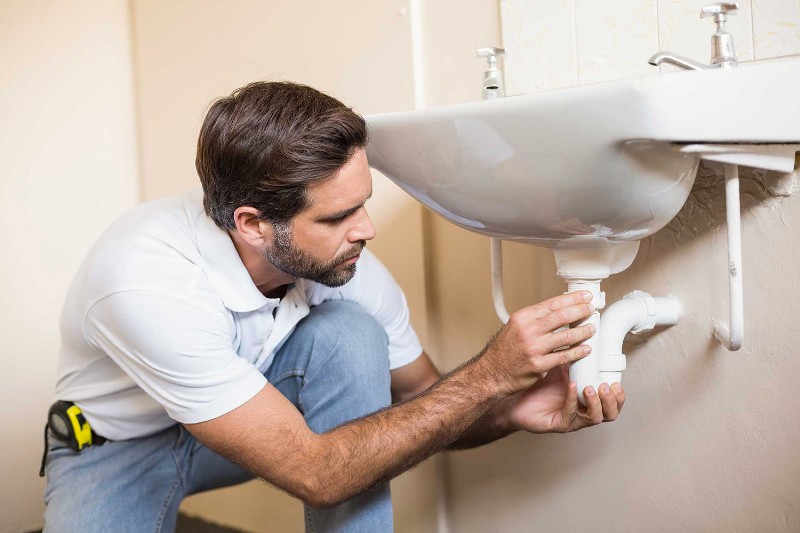That whole pipe system in your home can potentially have problems. If you don’t fix issues promptly, they can become an emergency with significant consequences. They could even put your home’s safety and its occupants’ health at risk.
For many people, a problem in the pipes in their home can mean calling a plumber or a company that deals with blocked drains. Or if you know a bit of DIY, you can try it without help, but only to solve minor issues.
Some problems are common, and by following our recommendations, you can solve them.
Plumbing tools and products
Here are some of the most common plumbing tools you might need to fix plumbing problems around the home.
- An adjustable wrench that is used to loosen or tighten nuts or bolts
- A plunger to eliminate obstructions in the pipes by generating pressure
- A lockable jaw
- Pliers
- Screwdrivers
- Pipe cutter
- PVC or copper pipes
- Steel link
- clamps
- Stripper
- Teflon tape
Tips for doing plumbing work
The first thing is prevention. The best plumbing jobs are the ones that are completed before something bad happens. For example, you must replace washing machine hoses every 3-5 years. Sometimes you forget, and they start to leak.
Regularly check for any plumbing failure to replace them as necessary. Inspect the drains, note if there is mould anywhere and check for small leaks.
During the colder months, take care of the pipes by insulating them from the outside. That way, they will last much longer. Some tips when doing plumbing work are:
When unclogging toilets, wear heavy-duty rubber gloves.
Wrenches and joint pliers are excellent tools for retrieving items that have fallen down the drain.
Have all the tools you need on hand.
Remember to close the main water pipe or if you have one in the bathroom, close it.
The Five Top Plumbing Issues
- Broken pipe
A pipe can break because the water pressure in the tube rises, and it gives way. Existing pipeline failures or deterioration over time can cause weakness, resulting in this damage.
This can become a severe problem because the area where the pipe is located will begin to flood and spread to other areas, which will also cause moisture problems.
The solution to a broken pipe begins with locating the main water valve and turning it off. This will prevent any extra damage. Also, check that no plugs or electrical devices are connected near the leak. If so, also turn off the electricity from the mains.
A quick fix to temporarily stop the leak if it’s not that large, apply pressure. Put Teflon tape around the broken pipe. If the damage is not too extreme, that will provide the necessary force to stop the leak, but this is not always the case.
If the tape doesn’t work, use a C clamp, a block of wood, and a piece of rubber. With the water turned off in the main pipe, place the rubber in the leak area and place the wood block on the rubber. Then open the clamp enough to go around the pipe, gasket material, and wood block.
Then put this part clamp opening against the pipe, facing where the leak is, and the screw portion against the wood block. Tighten until snug.
These solutions are temporary. You will have to replace the broken tube. If it is in an easily accessible place, you can do it yourself. But, if not, you should call a plumber as soon as possible.
- Leaking tap
A leaky tap can result in a broken pipe. You often don’t notice what is happening until you start to see the signs of damage, which are usually rusty water, water stains on the walls or cabinets, a mouldy smell, or cracks in the floor.
No matter how tightly closed, if any of your bathroom taps start to leak, this may mean you need new seat washers. To change them:
- Remove the cover and the screw on the tap.
- Remove the handle with a wrench to unscrew the packing nut.
- Unscrew the stem and replace the washer.
- Blocked drains
Clogged drains are usually easy to identify. If your sink, kitchen dishwasher, shower, tub, or toilet is not draining as it should, then a pipe is most likely clogged.
These blockages can occur for various reasons, such as broken or improperly installed pipes, heavy rain and foreign objects clogging the pipe. The worst situation is when the toilets are clogged.
As we mentioned at the beginning of the post, prevention is essential to avoid greater evils in your home’s plumbing system. Do not pour oil or food scraps down the drain in the kitchen. While in the bathroom, keep hair out of the drain.
In most cases, if the blockage is near the top of the pipe, the backup can be removed using a plunger or plumber’s snake.
You can also use a solution as simple as vinegar and baking soda. This natural chemical reaction will help unclog drains.
If a major blockage occurs deep within the plumbing system, you will need a plumber. He will conduct a deep cleaning of the pipe.
- Gas leak
The pipes in your house are not only for water but also for gas. A gas leak is the most serious and dangerous plumbing problem. A tiny spark can lead to fires or even explosions.
An undetected gas leak can lead to poisoning, and this can be fatal. Symptoms of carbon monoxide poisoning include headaches, fatigue, dizziness, and nausea.
The leak can be identified by a rotten egg-like odour and a low hissing noise coming from the pipe.
Never try to repair a gas leak. In this case, you will not be able to fix it yourself. You should call the plumber or the fire department immediately. Also, evacuate the area. Your safety and that of your family are essential.
- Loose or smelling toilets
Using a toilet when it is loose or off the ground is uncomfortable. When sitting, it will move and generate a feeling of instability.
This generally occurs because the element or material with which the toilet was fixed to the floor has deteriorated.
Fixing this problem is quite simple. You only need to reattach the edges of the toilet base.
For this, remove all remaining old caulking from the edges and clean them, then apply a waterproof caulk or glue along the joint between the toilet and the floor.
Next, you must remove the excess glue with your fingers and spread it more evenly. Finally, with a damp cloth, remove the remains of putty or sealant from the floor and let it dry.
If the toilet is very loose, we recommend you call a plumber, as the set screws will need to be tightened or replaced.
Bad-smelling toilets are often caused by clogging or because the tank and the discharge system are not working correctly. In the latter case, call an experienced plumber to solve the problem.
Other Common Home Plumbing Problems
Low water pressure
This is common in older houses. It may be that the taps or the shower need cleaning. It could also be that there is a leak somewhere in your house or there is corrosion inside the pipes. You might need to change the shower head.
Lack of hot water
It may be that when you go to shower, the hot water does not come out. On average, the water is hot inside the heater for 8 to 12 hours, depending on the maintenance of the equipment. Sediment inside the tank can cause problems or possible thermostat failure.

